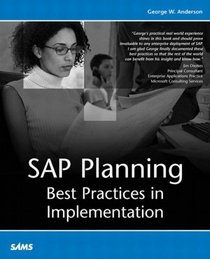Search -
SAP Planning: Best Practices in Implementation
SAP Planning Best Practices in Implementation
Author:
Everything a company needs to know to plan, organize, and perform an SAP implementation in one book! This is the only book available that shows the reader how to actually plan an SAP Data Center, install mySAP components, and set up the tools and processes necessary to monitor and manage a productive SAP system. It covers how to perform a Total ... more »
Author:
Everything a company needs to know to plan, organize, and perform an SAP implementation in one book! This is the only book available that shows the reader how to actually plan an SAP Data Center, install mySAP components, and set up the tools and processes necessary to monitor and manage a productive SAP system. It covers how to perform a Total ... more »
ISBN-13: 9780789728753
ISBN-10: 0789728753
Publication Date: 5/19/2003
Pages: 700
Rating: ?
ISBN-10: 0789728753
Publication Date: 5/19/2003
Pages: 700
Rating: ?
0 stars, based on 0 rating
Genres:
- Computers & Technology >> Networking & Cloud Computing >> Data in the Enterprise >> Client-Server Systems
- Computers & Technology >> Networking & Cloud Computing >> Data in the Enterprise >> SAP R3
- Computers & Technology >> Programming >> General
- Computers & Technology >> Software >> Business >> General




